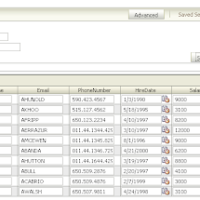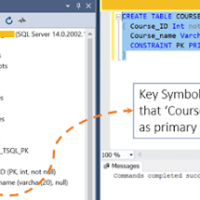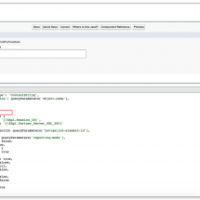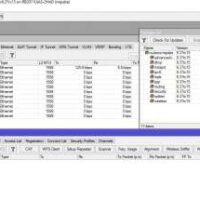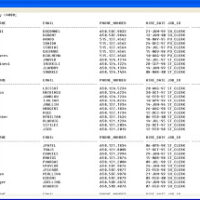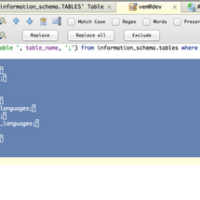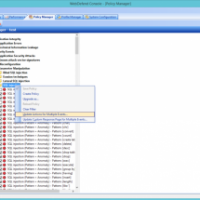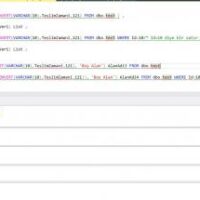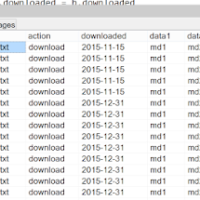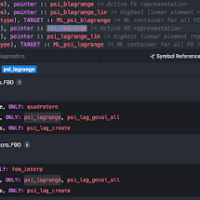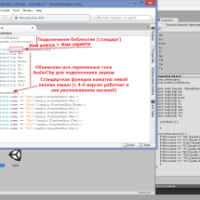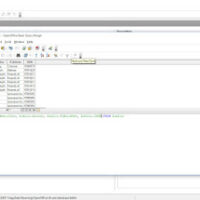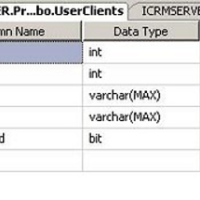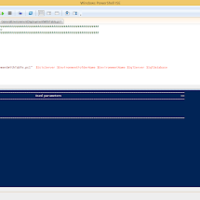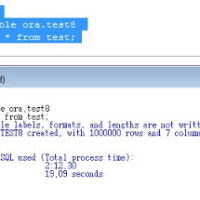Tag: SQL
SQLS*Plus for SQL Server Data Output - HTML Data Output, CSV Data Output, JSON Data Output, Vertical Data Output, and Column Autoformatting. HTML Data Output Use “set markup html on|off”...
SQL Indexes - The index is a method of performance tuning that allows for much faster retrieval of records. The index creates a record for each value that appears in the indexed columns. Each...
SQL Primary Keys - In SQL, the primary key is a single field or a combination of several fields that uniquely define a record. None of the fields that are part of the primary key should contain...
SQL VIEW is essentially a virtualized table that does not exist in nature. This table is created by an SQL statement that combines one or more tables. Create SQL VIEW Syntax for CREATE VIEW in...
SQL local temporary tables - unique in modules and built-in SQL programs in SQL sessions. Syntax for DECLARE LOCAL TEMPORARY TABLE in SQL DECLARE LOCAL TEMPORARY TABLE tab_name ( column_1...
SQL GLOBAL TABLES are tables that are created separately in SQL sessions. Syntax for CREATE GLOBAL TEMPORARY TABLE in SQL CREATE GLOBAL TEMPORARY TABLE tab_name ( col1 datatype_1 [ NULL | NOT...
DROP TABLE SQL statement allows you to remove a table from an SQL database. Syntax for DROP TABLE statement in SQL DROP TABLE tab_name;where:tab_name - Name of the table to delete...
HAVING SQL operator is used in combination with GROUP BY operator to limit groups of returned strings only to those whose condition is TRUE. Syntax of the HAVING operator in SQL SELECT expr1,2,...
WHERE SQL operator is used to filter results and apply conditions in SELECT, INSERT, UPDATE or DELETE. Syntax for WHERE statement in SQL WHERE conds;where:Conds - to be met for...
FROM SQL statement is used to enumerate tables and any associations required for SQL statement. Syntax of FROM statement in SQL FROM tab1 [ { INNER JOIN | LEFT [OUTER] JOIN | RIGHT [OUTER]...
The DISTINCT SQL operator is used to remove duplicates from the resulting SELECT operator set. Syntax for DISTINCT statement in SQL SELECT DISTINCT exprs FROM tabs [WHERE...
The EXCEPT SQL statement is used to return all lines in the first SELECT statement that are not returned by the second SELECT statement. Each SELECT operator will define a data set. EXCEPT will...
The MINUS SQL operator is used to return all lines in the first SELECT operator, which are not returned by the second SELECT operator. Each SELECT operator will define the data set. The MINUS...
INTERSECT SQL Server statement - The statement is used to return 2 or more SELECT statements. However, it returns only the strings selected by all queries or data sets. If a record exists in one...
UNION ALL SQL Server operator is used to combine the resulting sets of 2 or more SELECT operators. It does not remove repeating rows between different SELECT operators (all rows are...
TRUNCATE TABLE SQL server statement is used to delete all records from a table. It performs the same function as the DELETE operator, without the WHERE offer.Warning: when truncating a table,...


